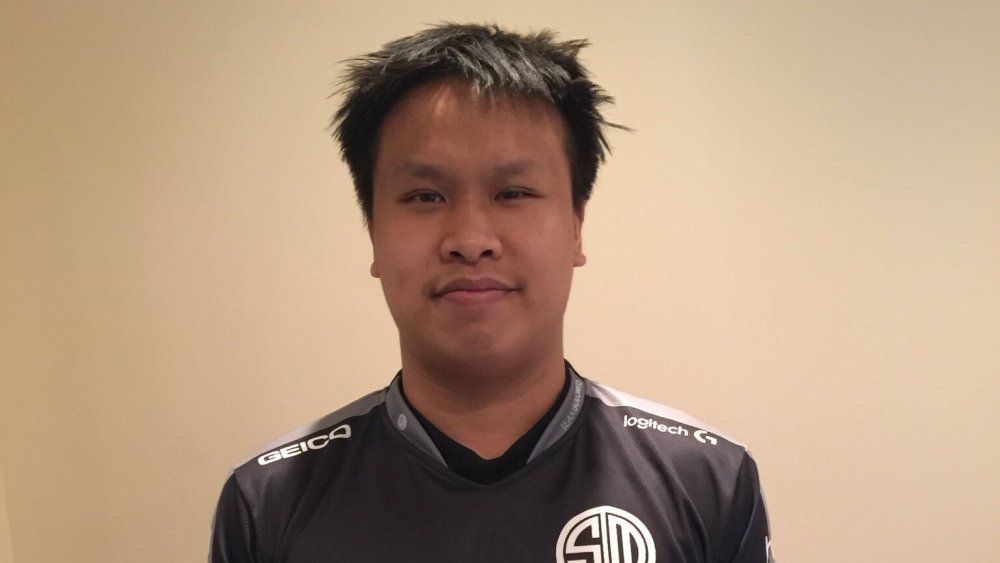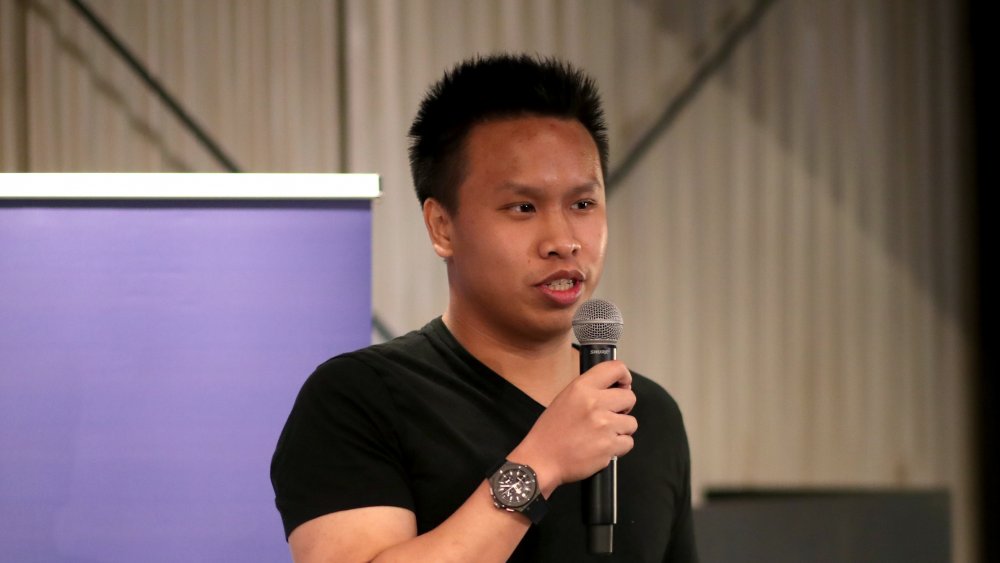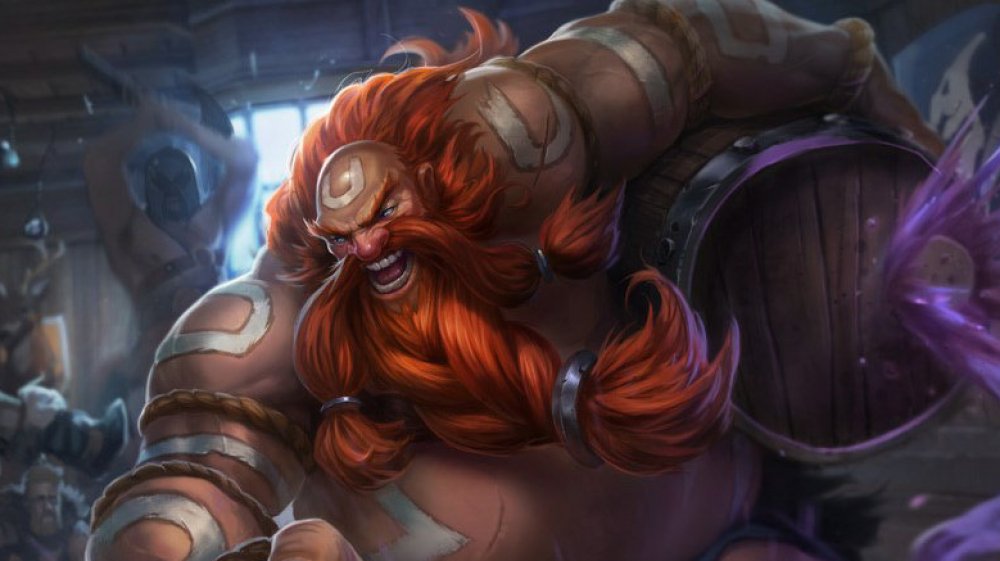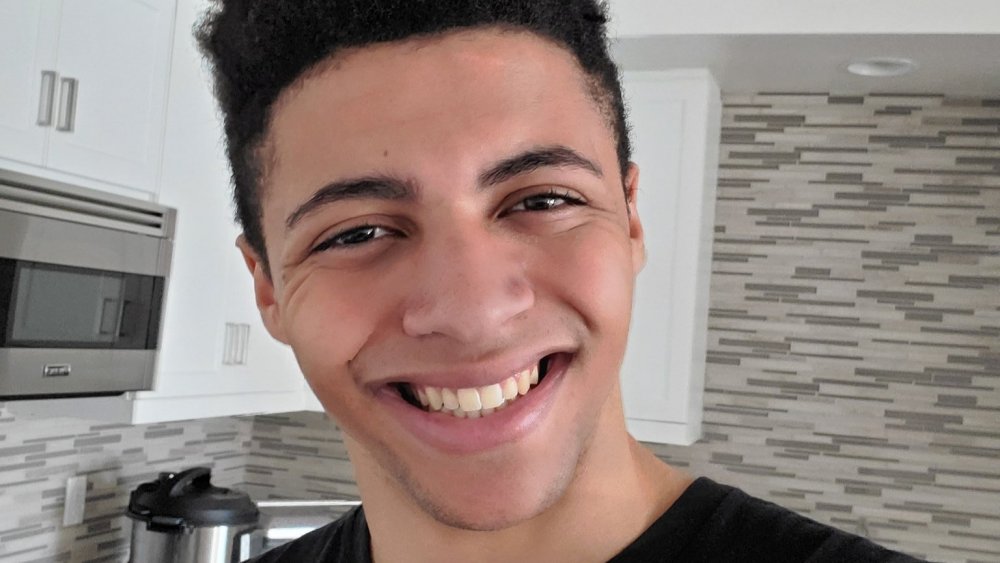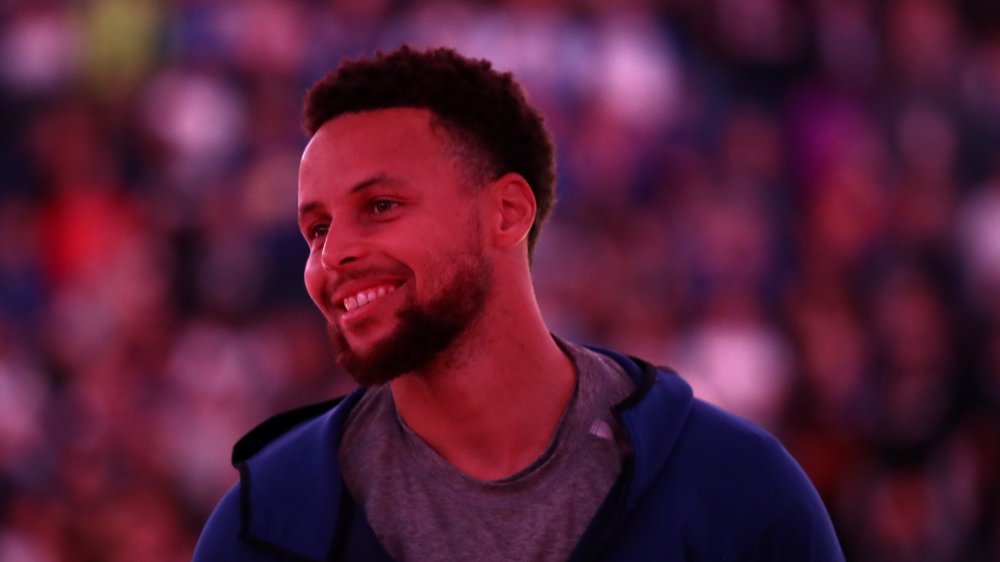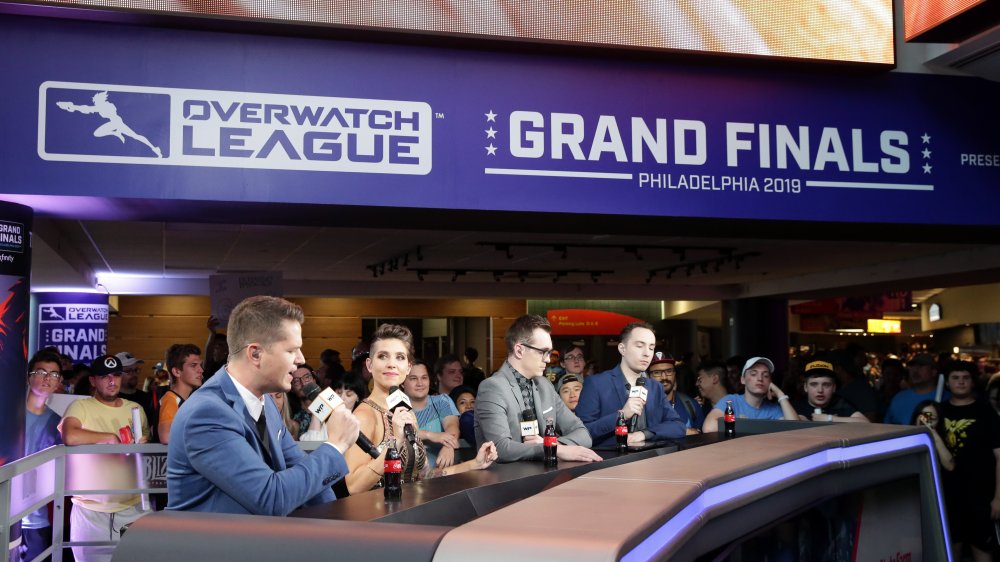The Untold Truth Of TSM
Whether its Fortnite or League of Legends, YouTube or Twitch, professional gaming or content creation, you've likely encountered Team SoloMid's (TSM) footprint. As one of the most identifiable esports brands, you can probably think of some of the organization's members off the top of your head. However, before it became a fixture of esports, Team SoloMid began as one high school kid's dream.
It took time, but TSM has grown into one of the most recognizable esports brands in the world. With over two million followers on Twitter, over two million subscribers on YouTube, and dozens of popular Twitch streamers in a variety of games, its reach has far surpassed its League of Legends roots. You may be able to picture some of its sponsored pros or partners, but here are some things you may not know about the international esports giant that is Team SoloMid.
TSM's founder dropped out of high school
Andy Dinh is the founder and CEO of TSM. The youngest of seven children, video games were a fixture of Dinh's life growing up. Constantly playing with and against his siblings and cousins also fueled his competitive nature. "It was a really social activity to play Smash Brothers as a family because if you lose, you get kicked out," Dinh said on a podcast with Twitch executive Marcus Graham and esports pioneer Dennis "Thresh" Fong. "We were really motivated to be better."
Dinh began to truly realize his passion for gaming with DotA, and eventually discovered League of Legends in high school. He and his brother, Dan, became especially skilled at the game. League of Legends, and the guide website he made about, began to take up more of Dinh's time and he eventually dropped out of high school. The decision, though risky, allowed him to focus on building his business while taking college courses.
Dinh was one of the first 100 League of Legends players
Many know Dinh started as a gamer before taking the plunge into the business world. He was an avid League of Legends player, yes, but the extent of his skill should not be underrated. In February 2020, Dinh told Logitech G that he was one of the first 100 LoL players when it entered closed beta in 2009. Dinh ascended to the top of the rankings in his region, and at various points became the highest-ranked mid laner in the world.
Dinh's skill garnered small-time League of Legends fame, and players wanted content from him. So, he created the solomid.net website, which eventually served as the foundation for the Team SoloMid esports organization. The site initially offered gaming guides, and began to rack up visitors over time. According to a Forbes article from 2018, Dinh began making $60,000 a month from ad revenue on the site.
Dinh wanted a team to compete on behalf of his website, so he recruited some of his friends. According to Dinh, he was one of the first professional gamers to move into a gaming house. The TSM team's hard work would pay off, and Dinh captained the squad to respectable finishes in early League championships. He retired from the team to focus solely on the business aspect of TSM in 2013 after two seasons as captain and mid laner.
TSM has had serious issues with hackers
At the time of this writing, the TSM website is a polished product reflective of a global brand. Before it reached this stage in its evolution, though, Dinh had to fight off his fair share of hackers. In 2014, solomid.net was the target of a significant attack. According to Dot Esports, shortly before the team was to take the stage at a competition in San Jose, California, the cover page of the website was changed to depict photoshopped sexual images and derogatory slurs.
One of the hackers allegedly responsible, known as Vinnie Omari, claimed the attack was not malicious and that none of the hackers made any attempts to cover their tracks. They did not ask for any money from TSM, and Omari called what they did "a little bit of grey hat fun." Nevertheless, it was a problem for the organization that gained significant attention online.
That 2014 hack may be the most well known, but it was not the only one. In June 2020, Dinh revealed a separate attack on the team website earlier in its development. Apparently, a Russian hacker took complete control of the site, and Dinh was essentially powerless to fight back. Luckily, Dinh only had to pay the hacker $300 to turn the site back over. Beyond these incidents, the TSM website has reportedly been hacked at least three other times.
TSM Is building the 'largest esports facility in the western hemisphere'
If you're looking for confirmation of TSM's massive success, Playa Vista, California might be a good place to start. There, the team is building what will reportedly be the largest esports complex in the western hemisphere. According to the TSM website, the 25,000 sq. ft, $50 million building will serve as the team's headquarters for its pro teams, streamers, and corporate staff. It won't be shy on amenities, either, as it will have a gym, cafe, studios, a full-time sports psychologist on hand and much more.
Dinh believes the building is crucial to improving TSM team performances in unprecedented ways. In an interview at Twitchcon in 2019, Dinh stated that the facility will help TSM analyze the ways esports players eat, sleep, train and practice. This holistic approach has not really been seen in esports before, and Dinh hopes it has a positive affect on development and performance.
"If you look at most esports teams in terms of how they train and practice ... they basically just throw things at the wall," Dinh said, "They test and measure, test and measure. And they do that all manually ... TSM wants to automate that."
TSM is dominating the esports industry financially
According to Forbes, Team SoloMid tied with Cloud 9 as the world's most valuable esports company in 2019. They are both supposedly worth $400 million. For perspective, this figure reportedly ranks TSM higher than some National Hockey League teams: the Arizona Coyotes ($300 million), the Florida Panthers ($310 million), and the Columbus Blue Jackets ($325 million). Forbes also estimates that TSM's value exceeds all but four Major League Soccer teams.
In addition to its professional sports teams, TSM also employs a host of streamers and content creators. The foremost of these is Myth, who had 6.6 million Twitch followers at the time of this writing. His fellow team members turned roommates Daequan and Hamlinz also have impressive followings. Combined, the three have over 9 million YouTube subscribers and over a billion total views. The trio rose to prominence playing Fortnite, but Myth has since ventured into plenty of other games.
Steph Curry invested in TSM
As you might imagine, big money can attract big names. In 2018, TSM received $37 million in funding from a group of venture capitalists that included National Basketball superstar Stephen Curry, his former teammate Andre Igoudala and National Football League Hall of Famer Steve Young. To reflect his genuine interest in the team, Curry later appeared in a video with Myth and Hamlinz in 2019.
Curry and Young are not the only mainstream sports figures to cross over into the virtual realm. Former Los Angeles Laker Rick Fox famously owned the Echo Fox organization from 2015 to 2019 before his involvement met its unfortunate end. Shaquille O'Neal, Magic Johnson and Robert Kraft are some other notable esports investors from the world of traditional sports. Undoubtedly, these established and well-known individuals are playing a major role in pushing esports further into the mainstream.
There's a big reason why TSM doesn't have Overwatch or Call of Duty teams
The Overwatch League has 20 teams from 19 different cities or states separated into two conferences that follow a regular season and playoff format. There is even an All Star weekend. Its parity to many traditional sports leagues is apparent.
While other esports companies like Faze and NRG were quick to hop in, a TSM investment is notably absent from two of the biggest leagues. The organization has no professional Overwatch or Call of Duty teams. Dinh explained why: "In order for your esports investment to be good, your brand, and your team, needs to represent and outlive any particular title."
Dinh does not want his teams to be tied to the success of certain games. However, TSM was not always against the Blizzard Entertainment hero shooter. In July 2016, shortly after the game's release, TSM acquired an Overwatch team. It had a roster of six pros, but the squad did not even survive a month. Cheating allegations surfaced about two of the team members from their days in CS:GO, and the organization decided it could not risk a poor reflection on the TSM brand. So, the whole project was scrapped and the company has not touched Overwatch since.
TSM staff in Forbes 30 Under 30
From player and coach to manager, CEO and owner, it seems like Dinh has worn an awful lot of hats for TSM. For most, it seems like building an international, multi-million dollar company would take a lifetime. However, Dinh has experienced massive success relatively early on in his life. As of this writing, he hasn't even celebrated his 30th birthday yet.
His impressive accomplishments attracted major media attention from the likes of Forbes magazine, which featured Dinh in its popular 30 Under 30 list for the gaming industry in 2017. Dinh is not the only TSM exec to make an appearance in the publication, however. Aileena Xu, the company's president of esports, featured in the 2019 edition of the 30 Under 30 list. Xu has been involved in TSM since the beginning, and she played an instrumental role in the teams' growth and popularity in relation to Fortnite.
Xu has not shied away from the limelight, either. She has made several appearances in videos with TSM creators and sometimes streams on Twitter herself. She also has a bit of a following on Reddit.

